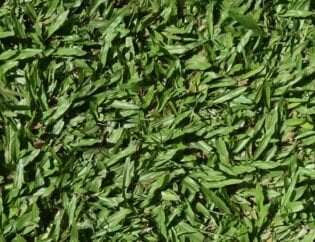
You may be frustrated to see brown spots on your lawn that are destroying a beautiful green stretch of grass. Brown spots can be caused by many things. If you are currently having this issue and you want to get rid of this problem, the first step is to identify the cause. Here is a list of the most common reasons why brown spots appear on your lawn:
Fungus
Brown spots can be caused by a fungus called Rhizoctonia. Fungal outbreaks often worsen when the weather is especially hot and humid. Over-watering can also be a contributing factor to Rhizoctonia issues with your grass.
Dog Urine
If you four-legged family member keeps peeing in the same spots in the yard, you might notice brown spots on the lawn. The reason for this is that dog urine contains nitrogen which can act as a fertilizer and will cause fertilizer-burn in large doses. If your pet often uses the same spot, burning will likely occur. To prevent damage to your lawn, just hose the area down after your dog is done- this will dilute and wash the excess nitrogen through the topsoil.
Chemical Damage
Household chemicals such as chlorine from a pool or hot tub can damage your lawn causing patches of dead or discolored grass. Washing the area of a spill with clean water will dilute any chemicals in the soil and rinse it out of the root zone. This will minimize any ongoing damage to your grass. If your grass is still alive just resume normal lawn maintenance and the area should recover with time. If you have a patch of dead lawn you may consider reseeding the area.
How to Get Rid of Brown Patches
Some tips for growing a healthier, greener lawn:
• Create a schedule for watering your lawn. It is recommended to water your lawn every 3-4 days. Make sure to water deeply- making sure the root zone is saturated. The best time to water is early in the morning before the heat of the day.
• Schedule fertilizer applications: Read your fertilizer instructions thoroughly and mark your lawn’s next fertilizer application on your calendar.
• Keep an eye out: Make a habit of monitoring the health of your lawn. Regular upkeep can prevent small problems from getting out of hand. Take a look at your irrigation system and adjust it as needed. Make sure you aren’t watering your driveway or walk-ways. Be sure that you don’t have soggy spots near your sprinkler heads. Is it time to cut the grass again? This is also a time to look out for any insect or fungal issues.
• Cut at the Proper Height: It’s best to only remove about 1/3 of your grass height per mowing. Keep your lawn height between 1 and 3 inches tall. Regular mowing will also help to control other lawn weeds.









